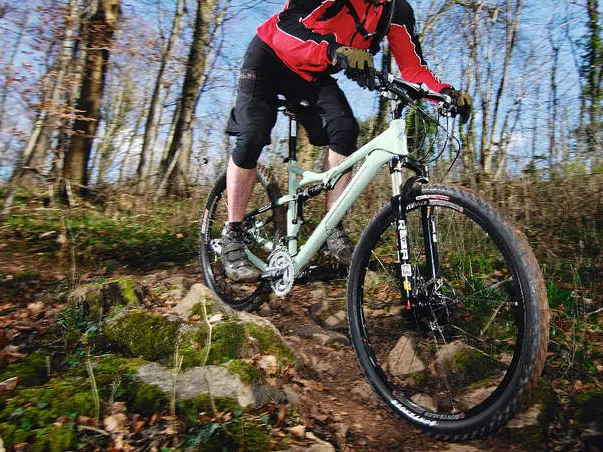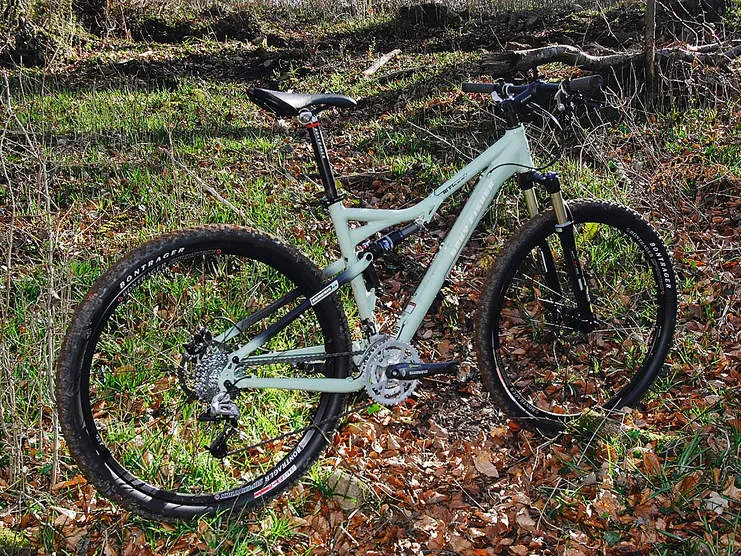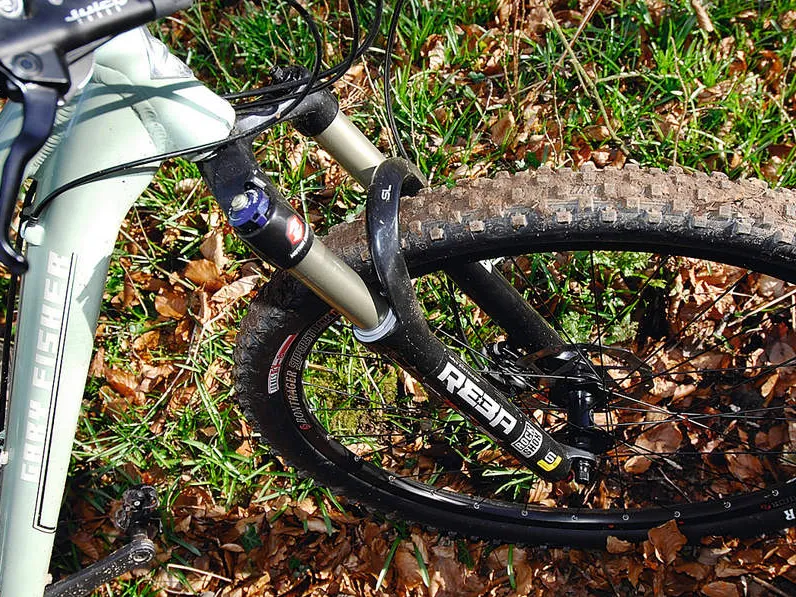Despite its unique steering geometry, Gary Fisher’s lightweight Hi Fi trail bike has been a big success. At the same time, big-wheeled 29er bikes are starting to gain real momentum among high-mileage riders. Does the Hi Fi 29er offer the best of both worlds?
On the trail, the Hi Fi 29er turns out to be an incredibly smooth, low-stress performance bike for relaxed riders. It's a well priced, well thought-out bike.
However, its shortage of steering and acceleration responsiveness won’t suit aggressive riders.
Nevertheless, it's worth a very close look if you prefer to measure your rides in miles, rather than near-misses on the twisty stuff.
Ride & handling: dominated by the wagon wheels
Its big wheels are the most obvious aspect of the ride. Inevitably, their bigger circumference and greater weight means the Hi Fi takes a few pedal strokes longer to get into its stride than a 26in-wheeled bike of the same overall weight.
Once you’re rolling, though, there’s a real momentum and ease to the way it carries speed on smooth or rough terrain. There’s more inertia in the wheel, and the tyre hits stuff at a shallower angle, helping you spin the gears more smoothly on both long fireroad sections or rooty/ gravelly singletrack sections.
The fact we were generally using the same gears on the Hi Fi as we were on the other bikes here translates to a noticeably average higher trail speed once you’ve done the same ratio but bigger-wheel maths. Even gear changes seem smoother as the extra momentum carries you through the not-driving-but-shifting pause.
fisher’s new G2 geometry – based around a steeper fork offset – works well in a 29er format. We still steered wide around corners as we got used to the longer bike and bigger wheels, and you’ll need to come into tight stuff slower and more casually to be sure of getting out the far side intact, but it doesn’t feel barge-like as some 29ers do.
While the hardtail/full-suss difference is much less obvious on 29ers, the suspension works fine in combination with the big tyre volume. It’ll occasionally thunk and clunk as the bigger wheels struggle to get out of the way of sudden square hits or drops, but it does add a smooth, soothing rhythm to the overall overture.
In fact, the whole softly, softly approach seems to be the best method with the Hi Fi and 29ers in general. Try to push the pace – in terms of acceleration or steering – and you feel like you’re just fighting against the wheels. The frame still flexes enough to make it slur cornering accuracy and get pulled out of gear occasionally if you really wrestle it.
Let the bike gradually drop into its natural rhythm and then just coax it up to coasting speed though, and you’ll realise that you’re covering ground very quickly, and that the lungs of other riders around you are working a lot harder than yours are. Think driving Grandad’s old Mercedes, not your kid brother’s hot Citroen Saxo, and you’ll understand why 29ers are finding favour fastest among less technical, higher-mileage riders.
Frame: stiffer for 2008
First-generation Hi Fi bikes were crazily light, but definitely on the flexy side, so it’s not surprising they’ve been beefed up dramatically for 2008, with a taller head tube and massive gutter diameter down tube. The Fox RP2 shock gets supported by a swing link to add stiffness and a falling shock rate, while very neat ‘invisible joint’ carbon fibre seatstays run bridgeless back up to the shock from a rear pivot above the dropout.
It’s a remarkably clean-looking frame, considering the natural hammock effect of the big wheels at either end. Down tube and stay topside cable/disc hose routing is particularly neat, and the seat tube is keyholed in three places to reduce the chance of fatigue splitting from a single slot. There’s room for a big bottle inside the main triangle and another underslung mount, too, and even the tyre clearance is good, leaving a drop to 100mm travel from 120mm as the only real 29in concession you’ll notice.
Equipment: clever choices in 29er options
Considering the inevitable extra weight of the bigger wheels and tyres, Gary fisher has done a good job keeping overall weight down.
Tubeless compatibility on the tyres and wheels helps alleviate the otherwise tricky hunt for hen’s-teeth-rare 29er inner tubes.
The Reba SL fork is one of the best 29er forks around, with full dual pressure, rebound and compression control of its short 100mm stroke. The mixed Shimano/ SRAM drivetrain set-up also works totally fine, too.
The racer-style flat-bar cockpit will suit many of the marathon race/ high-mileage riders who are going to be drawn to this machine, The pronounced back sweep helps lighten the steering feel too, although it won’t suit all wrists. Bontrager Race and Select gear is pragmatic rather than pretty, but Deluxe and Pro versions of the bike are available if you’ve more cash to splash.
This price range presents a broad range of cockpit types, with everything from 28in high risers to 23in flats breaking up the usual monotony of 25in riser bars.
Fisher’s choice of a flat bar here helps keep the front-end height reasonable despite those big wheels, and the pronounced back sweep effectively lightens the steering feel somewhat. More width would give more leverage for heaving the Hi Fi through tighter trails, though.
Summary: 29er pros & cons
It’s fair to say that 29er bikes are an acquired taste. They trade easy mileage-eating momentum and serene smoothness for smash-and-grab technical reactions. The Hi Fi is well balanced and good value for a 29er, but with so many less compromised conventional bike choices, you’ll have to decide if you really want to go with its extra flow at the expense of other aspects.




